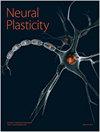The Role of the P1 Latency in Auditory and Speech Performance Evaluation in Cochlear Implanted Children
IF 3.7
4区 医学
Q2 Medicine
引用次数: 2
Abstract
Auditory deprivation affects normal age-related changes in the central auditory maturation. Cochlear implants (CIs) have already become the best treatment strategy for severe to profound hearing impairment. However, it is still hard to evaluate the speech-language outcomes of the pediatric CI recipients because of hearing-impaired children with limited speech-language abilities. The cortical auditory evoked potential (CAEP) provides a window into the development of the auditory cortical pathways. This preliminary study is aimed at assessing electrophysical characteristics of P1-N1 of electrically CAEP in children with CIs and at exploring whether these changes could be accounted for in auditory and speech outcomes of these patients. CAEP responses were recorded in 48 children with CIs in response to electrical stimulus to determine the presence of the P1-N1 response. Speech perception and speech intelligibility of the implanted children were further evaluated with the categories of auditory performance (CAP) test and speech intelligibility rating (SIR) test, respectively, to explore the relationship between the latency of P1-N1 and auditory and speech performance. This study found that P1 and N1 of the intracochlear CAEP were reliably evoked in children fitted with CIs and that the latency of the P1 as opposed to that of N1 was negative in relation to the wearing time of the cochlear implant. Moreover, the latency of the P1 produced significantly negative scores in both CAP and SIR tests, which indicates that P1 latency may be reflective of the auditory performance and speech intelligibility of pediatric CI recipients. These results suggest that the latency of P1 could be used for the objective assessment of auditory and speech function evaluation in cochlear-implanted children, which would be helpful in clinical decision-making regarding intervention for young hearing-impaired children.P1潜伏期在人工耳蜗植入儿童听觉和言语表现评价中的作用
听觉剥夺影响正常年龄相关的中枢听觉成熟变化。人工耳蜗(CIs)已经成为重度到重度听力障碍的最佳治疗策略。然而,由于听力受损的儿童语言能力有限,因此评估儿童CI接受者的语言结果仍然很困难。皮层听觉诱发电位(CAEP)为研究听觉皮层通路的发育提供了一个窗口。本初步研究旨在评估CIs患儿电CAEP P1-N1的电物理特征,并探讨这些变化是否可以解释这些患者的听觉和言语预后。记录48例CIs患儿对电刺激的CAEP反应,以确定是否存在P1-N1反应。采用听力表现(CAP)测试和言语可理解性评分(SIR)测试分别对植入儿童的言语感知和言语可理解性进行评估,探讨P1-N1潜伏期与听觉和言语表现的关系。本研究发现,耳蜗内CAEP的P1和N1在安装CIs的儿童中被可靠地诱发,并且P1的潜伏期相对于N1的潜伏期与人工耳蜗佩戴时间呈负相关。此外,P1潜伏期在CAP和SIR测试中均产生显著负得分,这表明P1潜伏期可能反映了儿童CI受者的听觉表现和言语可理解性。上述结果提示,P1潜伏期可用于客观评价人工耳蜗植入儿童的听觉和言语功能评价,有助于临床对幼龄听障儿童进行干预决策。
本文章由计算机程序翻译,如有差异,请以英文原文为准。
求助全文
约1分钟内获得全文
求助全文
来源期刊

Neural Plasticity
Neuroscience-Neurology
CiteScore
5.70
自引率
0.00%
发文量
0
审稿时长
1 months
期刊介绍:
Neural Plasticity is an international, interdisciplinary journal dedicated to the publication of articles related to all aspects of neural plasticity, with special emphasis on its functional significance as reflected in behavior and in psychopathology. Neural Plasticity publishes research and review articles from the entire range of relevant disciplines, including basic neuroscience, behavioral neuroscience, cognitive neuroscience, biological psychology, and biological psychiatry.
 求助内容:
求助内容: 应助结果提醒方式:
应助结果提醒方式:


